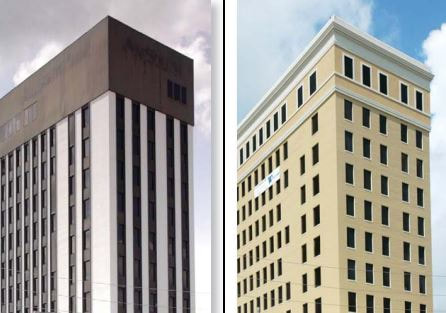One of the most important aspects of this program is that historic preservation is the focus. Owners must understand why their building is significant and preserve those historic, character-defining features and materials that make it worthy of a spot on the register in the first place. The new use for the structure should be a good fit for the historic building and not require altering it to such a degree that it loses its historic character. “Repair rather than replace” is the mantra when making decisions about details such as windows and plaster. Systems upgrades and modernizations are a part of any rehabilitation project, but they must be carefully planned and installed so that features, materials, and spaces are preserved. These projects also require retention of the primary, or most public, spaces in a building. For example, in a downtown commercial building, this might be the space as seen through the storefront. Every building is different, with its own unique characteristics, and each individual project requires a respect and understanding of the historic building to achieve a successful rehabilitation. Since preservation is the key to this program, owners should familiarize themselves with the “Standards for Rehabilitation” before attempting any rehabilitation project.
Those interested in this federal program must read and understand the government’s requirements for participants as described by both the National Park Service and the Internal Revenue Service. It is highly recommended that interested building owners contact the Tax Incentives Coordinator at the Alabama Historical Commission during the early planning stages of their project. During the past ten years, building owners have been approved for tax credits on $158 million in investment in ninety-seven projects throughout Alabama. These projects have saved historic places that are important to our state, created countless high-skilled and higher-paying jobs, increased property values, and generated tax revenue. The original intent of this incentive to promote historic preservation and spur revitalization has met the test.
Detailed information about Historic Preservation Tax Incentives is available at the National Park Service website: http://www.nps.gov/tps/tax-incentives.htm. Materials and guidance are also available from the Alabama Historical Commission at the tax credit section of our website: https://ahc.alabama.gov/ or by contacting Chloe Mercer at chloe.mercer@ahc.alabama.gov.
This feature was previously published in Issue 109, Summer 2013.
About the Authors
Chloe Mercer is the coordinator of the Federal Historic Preservation Tax Incentive Program at the Alabama Historical Commission. Robert Gamble, standing editor of the “Southern Architecture and Preservation” department of Alabama Heritage, is senior architectural historian for the Alabama Historical Commission.

 RSS Feed
RSS Feed